SUMMARY
This is AI generated summarization, which may have errors. For context, always refer to the full article.
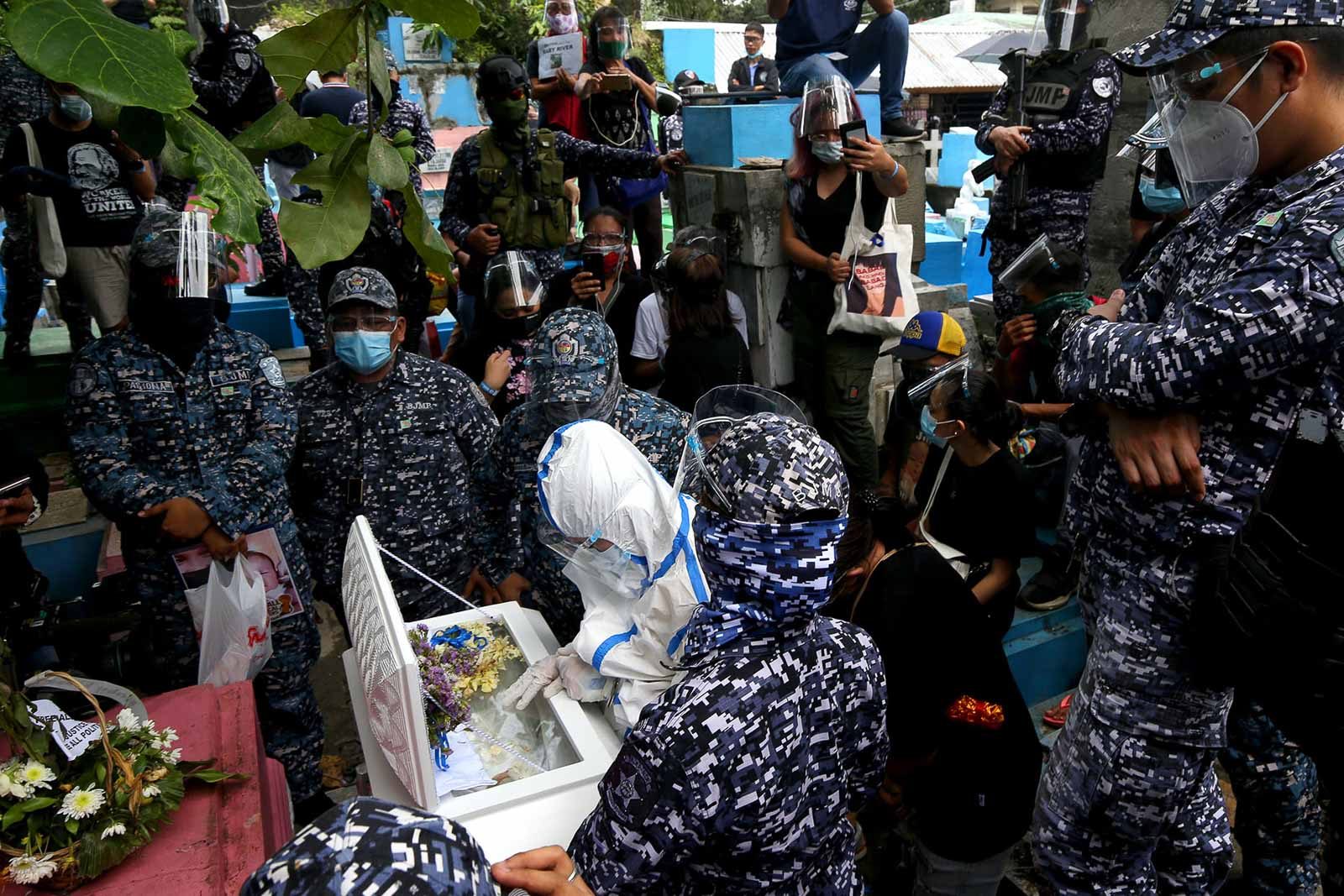
When Filipino activist Reina Mae Nasino buried her three-month-old baby River at the Manila North Cemetery, the police were an unmistakeable sight.
The Manila Police District (MPD) deployed a total of 125 policemen – 20 at the funeral home in Pandacan, 25 armed policemen at the burial site, and a mix of uniformed and plainclothes-wearing cops totaling all of 80 to monitor the protest crowd that gathered outside the cemetery.
This does not include dozens of jail personnel who surrounded Nasino as she buried her child while wrapped in personal protective equipment, covered in a mask, and cuffed at the wrists.
The burial adds to a running list of incidents where state forces are accused of abusing their powers after being emboldened by steep quarantine guidelines that are based on a containment strategy reliant on law enforcement.
For the MPD chief, the deployment was not enough.
“I don’t have any regret in the deployment, nakukulangan pa nga ako eh (it wasn’t even enough for me),” Brigadier General Rolando Miranda told Rappler in a text message.
The burial, he said, could have been “more peaceful.”
Critics, meanwhile, flagged the deployment as a case of “overkill.”
“Respect the rights of the family to a peaceful funeral and to mourn without fear of harassment,” said the Concerned Artists of the Philippines in a statement.
The police were “inhumane,” said the Katipunan contingent of the leftist Kabataan Party-list.
The diverging assessments of the same events are based on distinct foundations that have been built over a decades-long history of conflict in the streets.
For the policemen, it was a case of preventing any public disturbance – even if it means legitimate political expression. For the activists, it was a case of state forces once again trampling on their freedom to assemble, even the freedom to be spared from harassment.
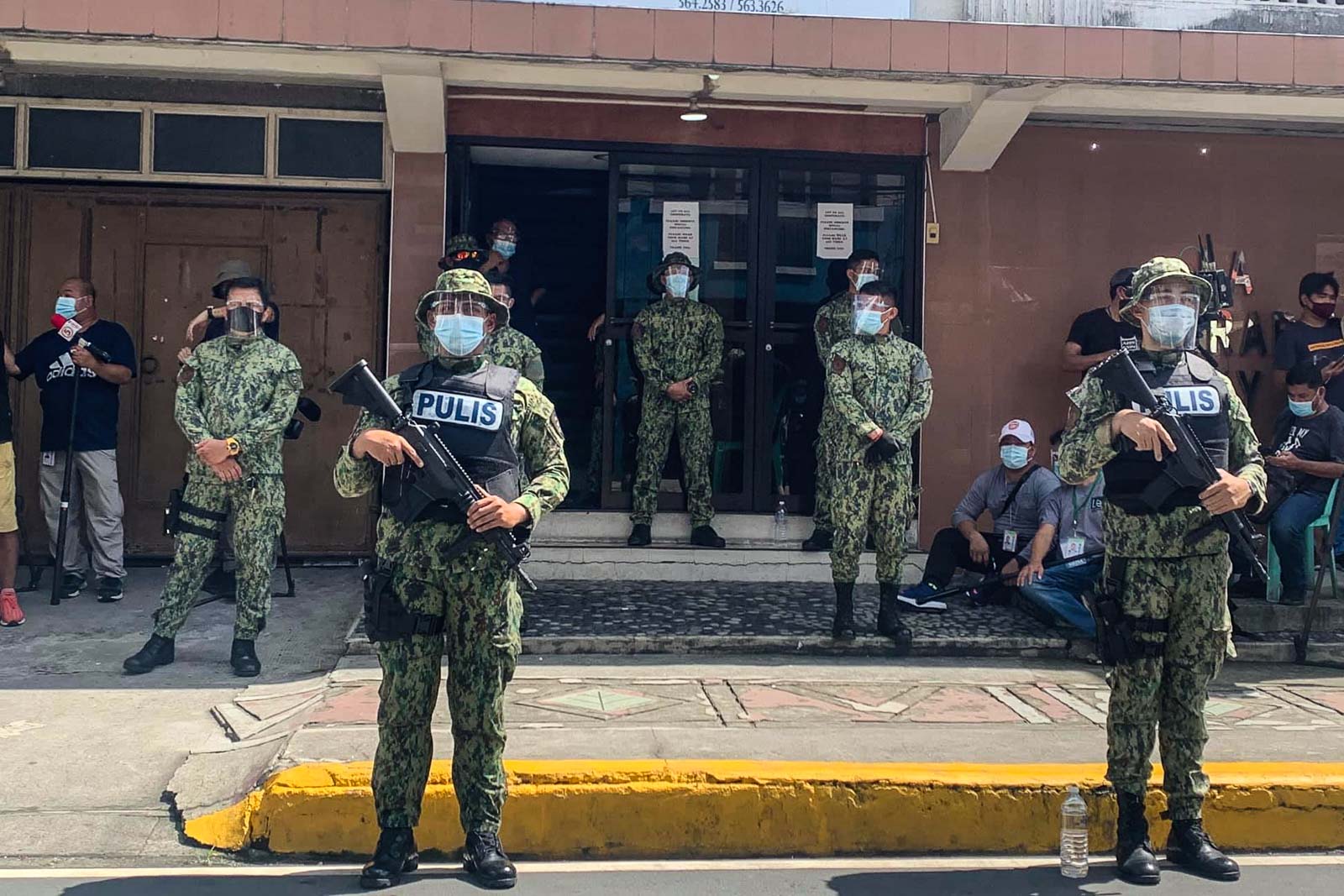
The police’s defense
Before becoming the chief of the MPD, Miranda was the chief of crowd control in the district in the early 2000s.
He recalled overseeing police deployment in around 3 protests a day, which he said, led to over 5 complaints against him before the Office of the Ombudsman.
In the case of protesters during the burial of River, a jaded Miranda dismissed critics as being mere activists who are against “all that the government does.”
“Sanay na kami diyan, sa criticism (We are used to criticism),” he said.
He explained that he had all the reasons to deploy over a hundred cops during the burial day.
“We received intel reports that the Left will take advantage of the funeral,” Miranda told Rappler in a phone call.
He said their operatives got wind of information that Leftist groups planned to have the funeral march pass by the Supreme Court before bringing the baby to his final resting place.
This plan was confirmed by the protesters, adding that they planned to pass by the Court of Appeals to condemn what they said was the failure of the justice system to protect the baby.
Miranda could not comprehend their motivations.
“What does the Supreme Court have to do with it? They’ll use the dead to push the mission of a militant group. Is that right?” Miranda said.
When it comes to deployment of policemen, the decision falls on the commander of the area. There are no clear guidelines on how many policemen should be deployed in proportion to crowd sizes. It is always up to the commander.
“There are no standards for that. Our priority is to prevent crimes,” Miranda said.
By crimes, Miranda refers to public disturbance and disobedience to a person of authority – the usual cases filed against protesters who allegedly tend to become unruly.
Had they deployed less, he said, activists could have taken advantage of the lack of officers and caused trouble.
Miranda recounted that they were heavily criticized for not deploying enough during the launch of the government’s white sand area at the Manila Bay. Photos of crowds failing to observe physical distancing rules went viral on social media, accompanied by criticism against the government for failing to implement its own rules.
The Manila City top cop added that he was even already being lenient as he allowed a demonstration, despite the national government’s ban on public gatherings of over 10 people.
Generals from Camp Crame supported Miranda’s manner of deployment. Director for Operations Major General Alfred Corpus – the top general in charge of operational policies of the PNP – said they trusted the judgment of Miranda.
“That’s his area. He knows the situation and he knows what he is facing. He could have information that he is holding for him to decide to execute that security operation,” Corpus told Rappler in a phone interview.
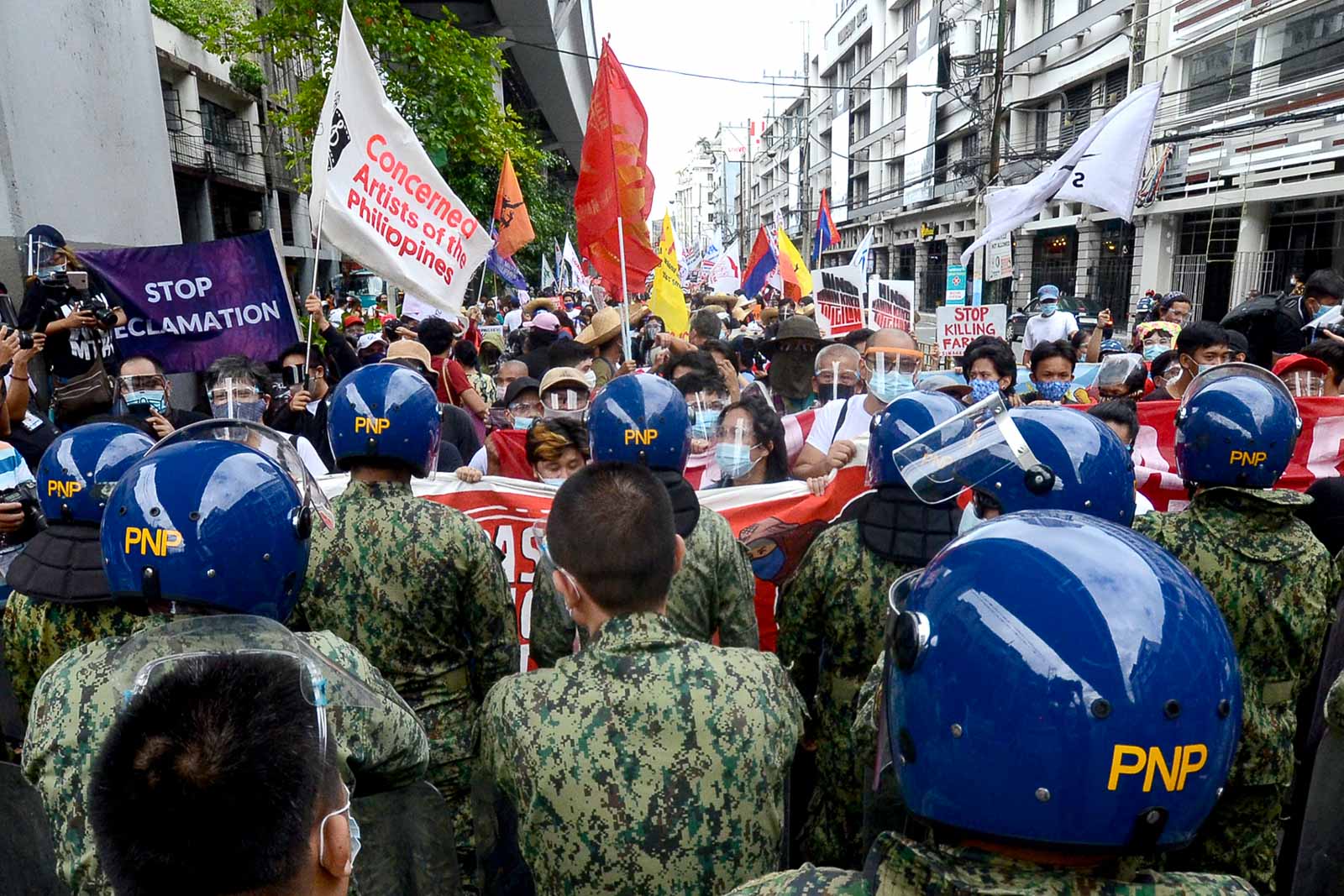
How crowd control works
The PNP has a specific term for handling public gatherings and protests: civil disturbance management (CDM) operations.
The police’s operational procedures handbook provides a 2-page guide on how to conduct these operations.
The first of these guidelines advises cops to respect the rights of civilians.
“It shall be imperative for the CDM contingent to perform their duties while observing the rights of demonstrators. Further, the members of the CDM contingent dealing with the demonstrators shall be in prescribed uniform,” the handbook says.
The guidelines also prohibit the carrying of firearms, tear gas, smoke grenades, and water canons unless “the public assembly is attended by actual violence or serious threats of violence, or deliberate destruction of property.”
Still, the handbook reminded law enforcers that “maximum tolerance shall always be observed.”
As for the procedures, the police follow a 5-step process:
- Isolate the area
- Secure likely targets
- Control crowds
- Establish area control
- Neutralize special threats
Manila police chief Miranda and Director for Operations Corpus added planning for the deployment is another crucial step in the process, which involves gathering information about the crowd and then deciding the “commensurate” number of personnel to be sent to the area.
The handbook provides insights on what commensurate means.
It says that when commanders are in doubt, they should deploy more.
“The presence of such large number may prevent the development of situations in which the use of excessive force would be necessary. A large reserve of troops should be maintained during civil disturbance operations,” the handbook says.
Still, the guidelines challenge commanders to perform a balancing act. Even with the guidance to deploy more, it says that cops must adhere to “the minimum necessary force principle.” It also advises police chiefs to mind the optics.
“Efforts should be exerted to create the image of a restrained and well-disciplined force, the sole purpose of which is to assist in the restoration of law and order. Further, while [the] CDM contingent should be visible, any activity which might excite rather than calm should be avoided when possible,” the manual says.
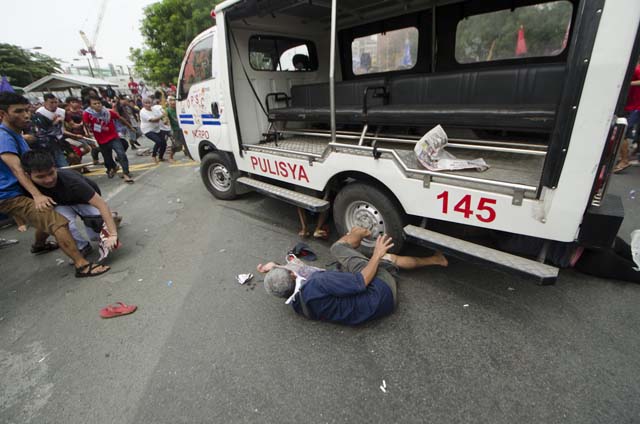
Protests turn for the worse
Police guidelines on handling protests may look clear and good on paper. But these have not prevented violence and arrests during mobilizations, based on various incidents in Philippine history.
Some of these resulted in excessive violence, as what happened in 1987 during the Mendiola Massacre. The peaceful mobilization turned for the worse as government forces opened fire on thousands of farmers and peasants who were demanding genuine agrarian reform. Thirteen farmers were killed, with at least 74 injured. (READ: 4 things to know about the Mendiola Massacre)
In October 2016, activists and indigenous peoples protesting the presence of the military in their ancestral lands were injured after cops drove a police vehicle through the crowd. At least 30 people were also arrested.
President Rodrigo Duterte’s rejection of criticism is also reflected in the treatment of activists, especially during protests. Progressive groups, whom the government accuses of being communist fronts, are also subjected to hostility.
The Duterte government has also been accused of taking advantage of the pandemic to impose guidelines that affect constitutionally-guaranteed rights, including the ban on mass gatherings.
Since March 2020, several mobilizations have been violently dispersed while activists have been arrested and detained for allegedly violating quarantine rules, even if they implement strict physical distancing.
On April 1, at least 21 residents of Sitio San Roque in Quezon City were arrested after staging a protest to demand help in the middle of the government-imposed lockdown. Some participants reported seeing officers physically attacking the men in the group. (READ: ‘Walang-wala na’: Poor Filipinos fear death from hunger more than coronavirus)
On the 2nd of June, 6 jeepney drivers – including a 72-year-old – were arrested for protesting the government’s policies on public transportation.
On June 5, police arrested at least 8 youth activists during a protest rally against the anti-terrorism bill in Cebu City. The mobilization started peacefully but was reportedly disrupted by anti-riot police.
Videos from the incident showed police running after the activists. Some of these state agents were in plain clothes, while others were wearing combat gear, according to reports.
Less than a month after, on June 26, at least 20 people participating in a mobilization commemorating pride month and criticizing the anti-terror law were arrested in Manila.
According to organizers, they were already wrapping up their protest when they were dispersed and arrests were made. The activists were released on June 30 after being detained for 4 days.
Police actions against activists and protesters were also reported during Duterte’s 5th State of the Nation Address – there were arrests and confiscation of protest materials.
Negotiating with the police
A violent incident is the last thing any activist wants to happen during mobilizations and public gatherings. As much as possible, organizers would negotiate with the police to let them stage their program.
Youth activist Joshua Marcial has had his fair share of negotiations during mobilizations staged by his organizations, including the National Union of Students in the Philippines (NUSP).
Prior to being elected secretary-general in October, Marcial spent most of the past year as a paralegal. His tasks included dealing with state forces, usually the police, who were sent to respond to the progressive groups gathered to register their grievances against government policies.
Paralegals, he said, make sure that legal procedures are followed, and that the rights of people are protected and not violated, especially during protest mobilizations.
“Kapag may pulis sa mga protest, dapat may mediator, kasi kung walang third party, ang masusunod ay iyong may hawak ng power and iyong may blessings of the state,” he told Rappler in a phone interview on Tuesday, October 20.
(When police are present during a protest, there should be a mediator because if there’s no 3rd party, the party holding power who has the blessings of the state will have the last say.)
Police are usually still calm at the beginning of negotiations, according to Marcial. But at the same time, there would already be a noticeable increase in the number of personnel deployed.
Civilian volunteer units from barangays or local government units, such as the Task Force Disiplina of Quezon City, are also sent to the scene.
“Ang daming unnecessary na mga deployment at ginagawang normal na ito lalo na kapag ang protesta ay laban sa mainit na isyu,” he said.
(There are a lot of unnecessary deployments, which they aim to normalize, especially if the protest is against a controversial issue.)
Role of paralegals
Part of Marcial’s responsibility is to ensure that police talk only to designated individuals to avoid intimidation, especially if uniformed men carrying high-powered weapons are visible.
Questions will be thrown at the state agents, mostly by paralegals like Marcial: Is there a problem? What is your concern?
The police then will ask: Why are you here? Who are the leaders? Who sent you?
There were a lot of instances also when police bypassed paralegals and designated spokespersons by speaking directly to participants, in the hopes of extracting more information about organizers. State agents also take videos and photos of participants.
“Alam natin iyong pagtatanong kung sino ang lider ng isang mobilization ay isang hakbang para makapagsampa sila ng kaso kahit na karapatan naman natin ito,” Marcial said. “Isa itong form of harassment na ginagawa ng kapulisan.”
(We know that they aim to build cases when they ask who is the leader of the mobilization. This is just a form of police harassment.)
Being a paralegal, however, is no guarantee of being immune from arrest.
On Labor Day, Marcial and 3 other volunteers were already on their way home when they were notified that some people they helped were summoned by barangay officials in Quezon City.
“Sinabihan raw sila ng barangay na may paglalagyan iyong mga umattend sa event namin,” he recalled. “Parang ibig sabihin hindi bibigyan ng ayuda.”
(They were told by the barangay that they would face consequences for attending the event, including not receiving government subsidy.)
They went back to assist in their capacity as paralegals. But they too were questioned and accused of staging a protest. The group was eventually arrested, together with 14 people who were mostly jeepney drivers, even if they only distributed face shields and prepared food at a community kitchen.
Marcial, his companions, and the relief operation’s beneficiaries were then brought to Camp Karingal, the headquarters of the Quezon City Police District. They were freed two days after.
“Ang mga paralegals ngayon, wala na silang assurance na magiging safe sila,” he said. “Ganoon kalupit at kapursigido manghuli ang mga pulis ngayon, lalo na sa mga progressive organizations.”
(There is no assurance that paralegals will stay safe. That’s how cruel and determined police are in making arrests, especially among progressive organizations.)
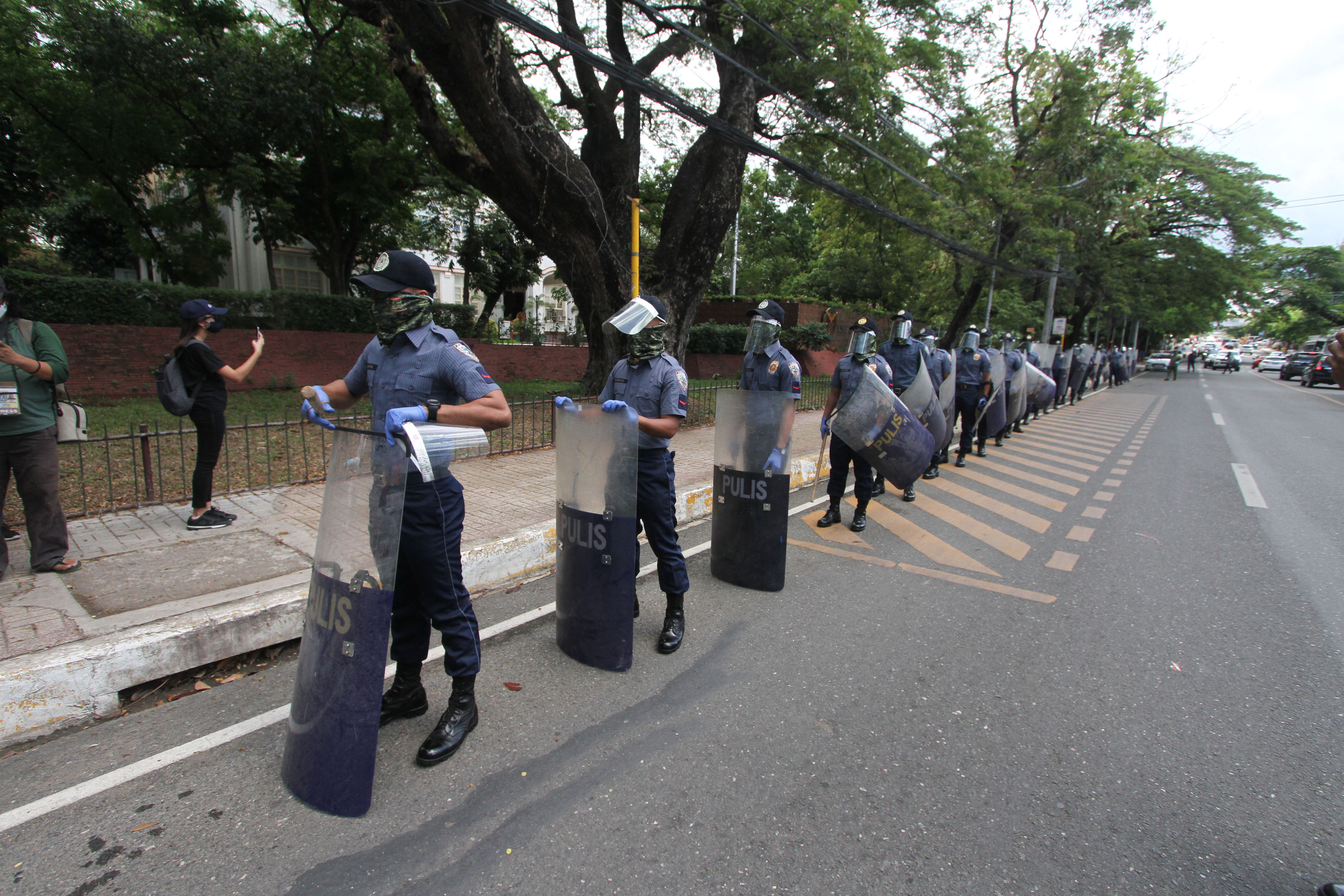
Show of force to intimidate?
The rights to peaceful assembly and association are guaranteed by the 1987 Philippine Constitution. In a position paper in 2017, the Commission on Human Rights (CHR) said that these rights “constitute the very basis of a functional democratic polity, without which all the other rights would be meaningless and unprotected.”
The Philippines is also bound to implement international instruments, such as the International Covenant on Civil and Political Rights, that protect the freedom of people to peacefully organize.
In 2019, UN special rapporteur Clement Nyaletsossi Voule emphasized that public demonstrations and assemblies play an important role in “public participation, holding governments accountable and expressing the will of the people.”
While there are instances in which state agents intervene, he said that “peaceful intentions of organizers and participants should be presumed” and warned that sporadic acts of violence by a few individuals do not automatically mean that “the assembly as a whole is not peaceful.”
A UN document covering the basic principles on the use of force and firearms also states that enforcers are ordered to avoid the use of force in dispersing assemblies that are “unlawful but non-violent.” In the event of violent assemblies, they may only use weapons when there are no other less dangerous options, and only to the minimum extent.
But even without actually using force, NUSP’s Marcial cautioned that having hundreds of uniformed personnel yielding weapons and surrounding activists during mobilizations already opens the floodgates of intimidation.
“It’s their strategy to squash dissent and paralyze mobilizations, to show that if you cross the line, the police will do no matter what to maintain the status quo,” he said.
“Nakakatawang isipin na para lang matakot ang mga mamamayan, magsusuot sila ng full battle gear talaga, pero hindi nila magawa iyon sa mga high-profile corrupt and convicted politicians,” Marcial added.
(It’s funny to think that just to scare ordinary citizens, they would wear full battle gear, but they can’t do that with high-profile corrupt and convicted politicians.)
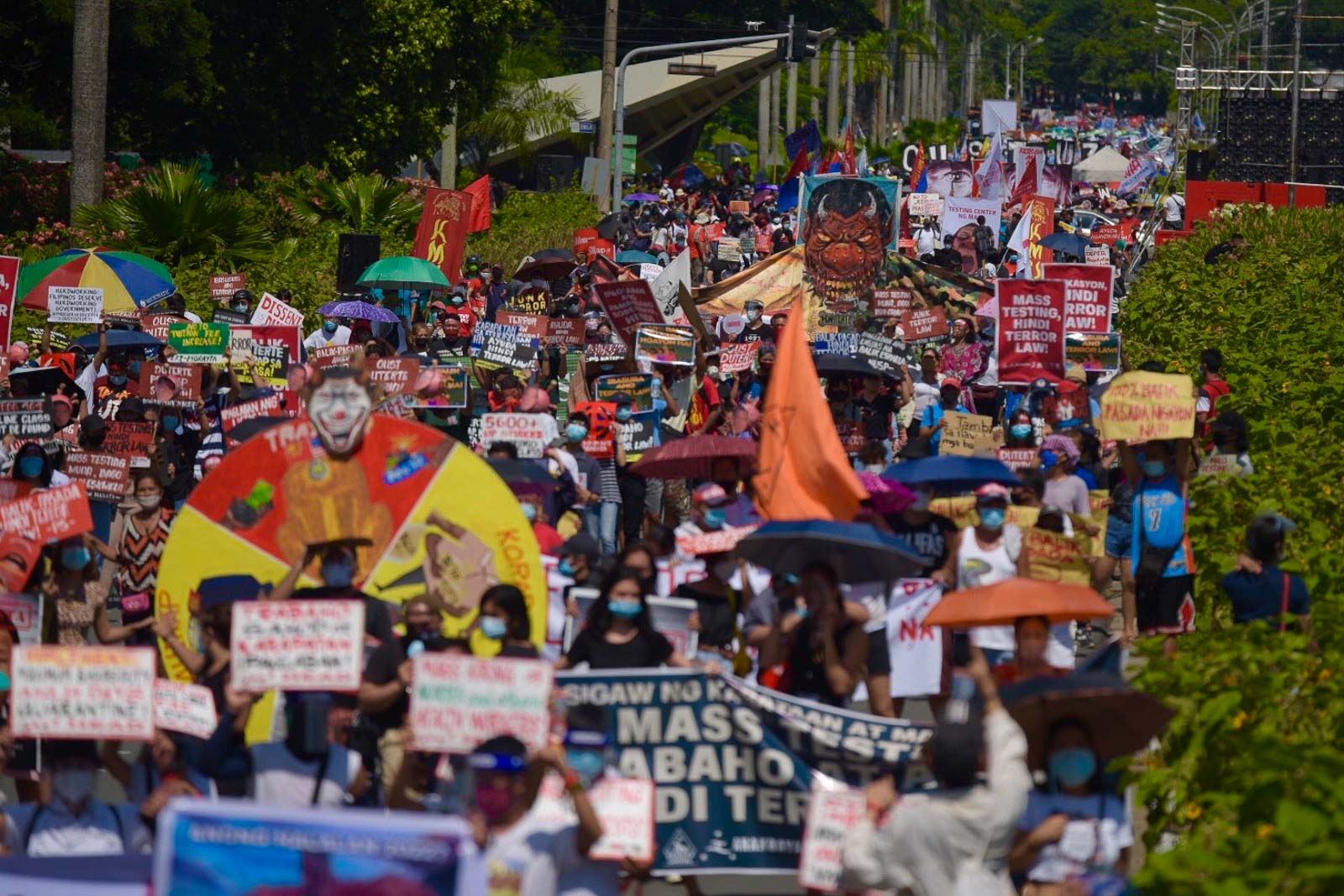
Protest under the anti-terror law
Groups are highlighting the importance of public demonstrations now more than ever amid the worsening situation of democracy under President Duterte.
Yet activists are again facing another challenge in the form of a legislation that threatens to suppress dissent in the Philippines – the anti-terror law.
The law says protests are not terror acts except if the protest has an intent “to cause death or serious physical harm to a person, to endanger a person’s life, or to create a serious risk to public safety.”
Human rights groups point out that this is dangerous, because of the police’s record of planting evidence, and its “nanlaban” modus operandi.
Marcial fears that the anti-terror law will just make activists more vulnerable to abuse from the state.
“Paano kapag hindi pinayagan ng estado ang mobilization pero tinuloy pa rin namin? Ano ang implication, terorista na ba kami agad just because we want to register our dissent [against] government policies?” he said.
(What if we are not allowed by the state to mobilize yet we still do it? What are the implications? Are we going to be tagged as terrorists just because we want to register our dissent [against] government policies?)
In a phone interview with Rappler, PNP Director for Operations Major General Alfred Corpus said they do not interpret the anti-terror law’s implementing rules and regulations as a ban against any expression of dissent.
“That’s far-fetched. Even I haven’t thought of that. Human rights and the right to free speech is always paramount,” Corpus said.
When asked if chants like “Oust Duterte” could be the basis for arrests, he said no.
“That’s not in the law. Is that terrorism? That’s not terrorism,” he said.
But even with the guidance from knowing generals in Camp Crame, ultimately, it will be police on the front lines who will decide whether impassioned chants and etchings on placards will merit arrest.
Even before the anti-terror law, activists had been arrested under disputed circumstances. Police just have another basis to continue doing what they have been doing.
For them, they are duty-bound to minimize public disturbance and they will use the law to jail troublemakers. For activists, however, it is a law that further erodes dissent and democracy under the Duterte administration. – Rappler.com
Add a comment
How does this make you feel?
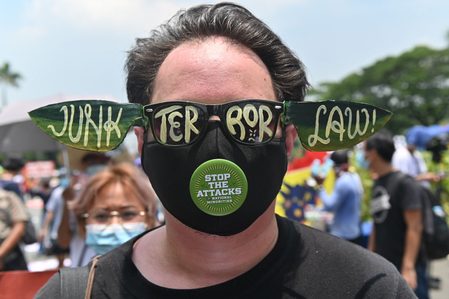
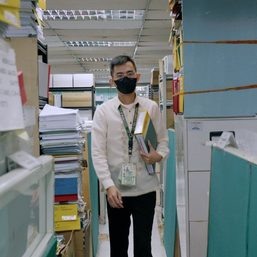
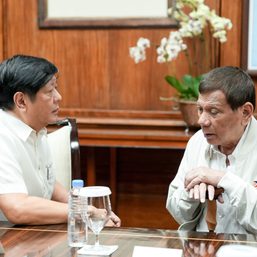
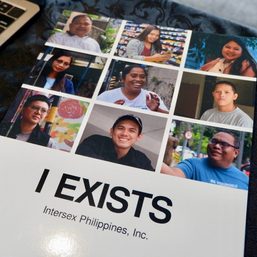
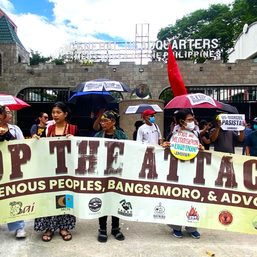
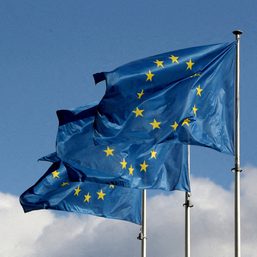
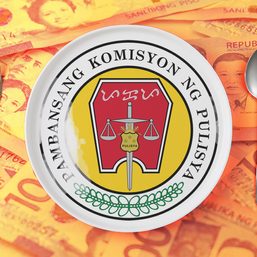
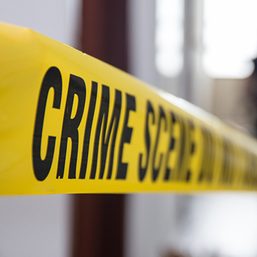
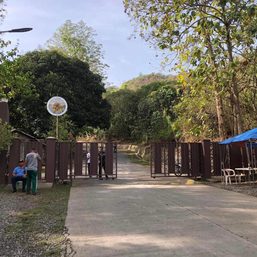
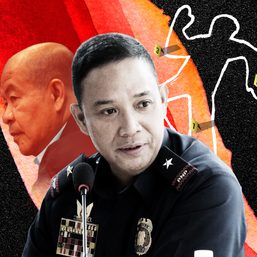
![[EDITORIAL] Bakit hindi mahuli-huli si Apollo Quiboloy?](https://www.rappler.com/tachyon/2024/04/animated-quiboloy-investigation-april-2024-carousel-edit.jpg?resize=257%2C257&crop_strategy=attention)
There are no comments yet. Add your comment to start the conversation.